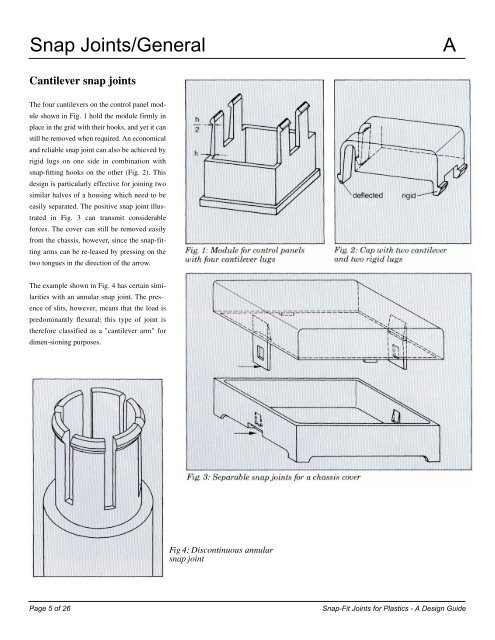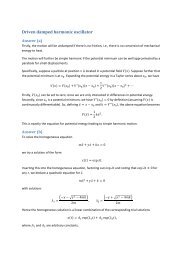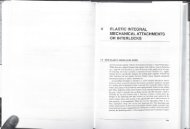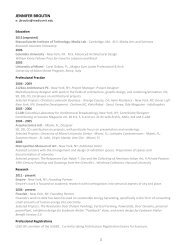Snap-Fit Joints for Plastics - A Design Guide - MIT
Snap-Fit Joints for Plastics - A Design Guide - MIT
Snap-Fit Joints for Plastics - A Design Guide - MIT
You also want an ePaper? Increase the reach of your titles
YUMPU automatically turns print PDFs into web optimized ePapers that Google loves.
<strong>Snap</strong> <strong>Joints</strong>/General A<br />
Cantilever snap joints<br />
The four cantilevers on the control panel module<br />
shown in Fig. 1 hold the module firmly in<br />
place in the grid with their hooks, and yet it can<br />
still be removed when required. An economical<br />
and reliable snap joint can also be achieved by<br />
rigid lugs on one side in combination with<br />
snap-fitting hooks on the other (Fig. 2). This<br />
design is particularly effective <strong>for</strong> joining two<br />
similar halves of a housing which need to be<br />
easily separated. The positive snap joint illustrated<br />
in Fig. 3 can transmit considerable<br />
<strong>for</strong>ces. The cover can still be removed easily<br />
from the chassis, however, since the snap-fitting<br />
arms can be re-leased by pressing on the<br />
two tongues in the direction of the arrow.<br />
The example shown in Fig. 4 has certain similarities<br />
with an annular snap joint. The presence<br />
of slits, however, means that the load is<br />
predominantly flexural; this type of joint is<br />
there<strong>for</strong>e classified as a "cantilever arm" <strong>for</strong><br />
dimen-sioning purposes.<br />
6<br />
Fig 4: Discontinuous annular<br />
snap joint<br />
Page 5 of 26 <strong>Snap</strong>-<strong>Fit</strong> <strong>Joints</strong> <strong>for</strong> <strong>Plastics</strong> - A <strong>Design</strong> <strong>Guide</strong>





